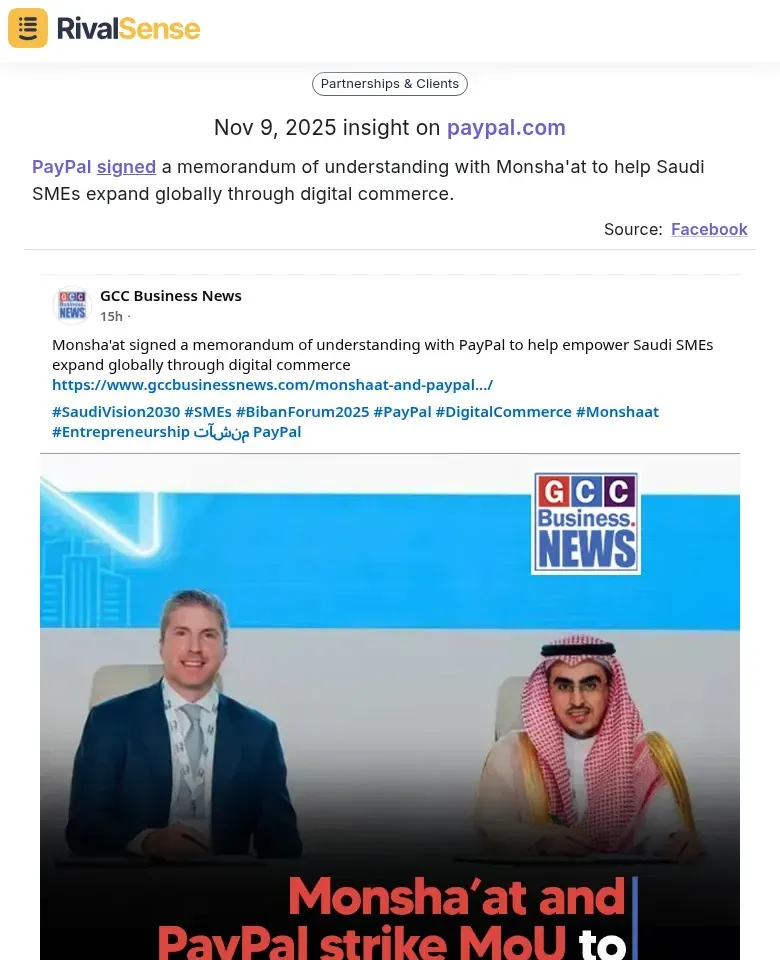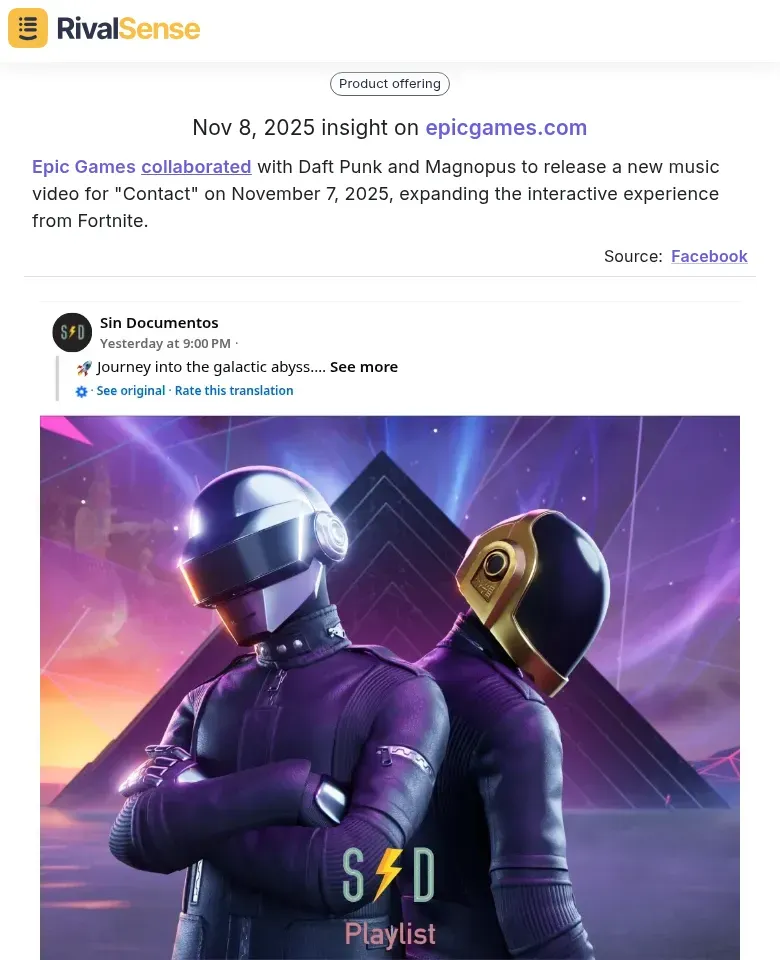The Strategic Benefits of a Competitive Audit: A Practical Guide for Business Leaders
In today's hyper-competitive business landscape, even the most innovative ideas face intense rivalry. If you're not selling technology from Area 51 with an exclusive patent, competitive analysis must be part of your core marketing strategy. A comprehensive competitive audit better prepares you to battle it out in the marketing arena and secure your market position.
With the digital world transforming into a war zone for businesses, capturing your target users' attention—even for a few seconds—can determine whether you emerge as a winner or fade into obscurity. As competition intensifies across all sectors, the ability to adapt to emerging trends before your competitors implement them becomes crucial for survival and growth.
Why Competitive Audits Are Non-Negotiable in Modern Business
Competitive market research consistently shows that businesses must maintain a 24×7 watchful eye to prevent target users from being hijacked by competitors. For marketing professionals and business owners, comparing marketing strategies against competitors should be a daily discipline, not an occasional exercise.
Emulating and adapting strategies that work for your competitors ensures sustainable growth, uncovers new opportunities, and generates qualified leads. However, the process of scrutinizing competitors' products, sales, and marketing strategies requires systematic approach and the right tools.
What Exactly is a Competitive Audit?
A competitive audit is a strategic framework businesses use to assess the competitive landscape comprehensively. It examines how top competitors deploy various marketing tactics to generate leads, drive sales, and build traction for their products or services.
Beyond mere observation, competition analysis helps you understand competitors' strengths and weaknesses to build a concrete, data-driven marketing strategy for your business.
The Tangible Benefits: Why You Can't Afford to Skip Competitive Audits
🚀 Stay Ahead of Market Shifts
Marketing advancements happen rapidly, and without dedicated resources to test new strategies, competitors can easily outmaneuver you. A thorough competitive audit ensures you stay on top of marketing activities and reap maximum benefits from your efforts.
📈 Identify Growth Opportunities
By understanding competitors' strengths, weaknesses, and opportunities, you can make decisive changes to your current marketing strategy. This paves the way for establishing success routes that competitors haven't explored.
💰 Optimize Resource Allocation
Knowing what works (and what doesn't) for competitors helps you spend marketing dollars judiciously, focusing on strategies with proven ROI potential.
Real-World Competitive Insights and Their Strategic Value
Staying informed about competitor activities can provide actionable intelligence for your business strategy. Here are some real examples of competitive insights and why they matter for strategic decision-making:
🤝 Partnership Announcements: PayPal and Monsha'at

PayPal signed a memorandum of understanding with Monsha'at to help Saudi SMEs expand globally through digital commerce. Why it matters: Tracking partnerships can reveal new market entry strategies and potential collaboration opportunities for your business. By understanding who your competitors are partnering with, you can identify gaps in your own strategy or anticipate shifts in the competitive landscape that might affect your market position.
🎵 Collaborative Marketing: Epic Games and Daft Punk

Epic Games collaborated with Daft Punk and Magnopus to release a new music video for "Contact" on November 7, 2025, expanding the interactive experience from Fortnite. Why it matters: Monitoring collaborations and marketing campaigns helps you gauge competitor innovation in engagement tactics. This can inspire your own creative marketing efforts and highlight emerging trends in customer interaction, allowing you to adapt your strategies to stay relevant and engaging.
👥 Management Changes: Sift's New Leadership

Sift appointed Marc Friend as CEO, Raj Jain as Chief Product Officer, Johannes Hoech as Chief Marketing Officer, and Ajay Gopal as Chief Strategy Officer. Why it matters: Keeping an eye on management changes can signal strategic pivots or new directions for competitors. This insight allows you to prepare for potential shifts in their product offerings, market focus, or competitive tactics, helping you proactively adjust your own business strategy.
Practical Competitive Audit Framework: A Step-by-Step Guide
Step 1: Identify Your True Competitors
Direct vs. Indirect Competitors:
- Direct competitors offer similar products/services to the same target audience
- Indirect competitors serve the same market but with different solutions
✅ Actionable Checklist:
- List 3-5 direct competitors in your space
- Identify 2-3 indirect competitors who could expand into your territory
- Use tools like SEMrush or Ahrefs for competitor identification
- Monitor new entrants regularly
Step 2: Analyze Products and Services
Innovation drives business survival. Track how competitors evolve their offerings:
- Product feature updates and additions
- Pricing strategy changes
- Service enhancements
- Packaging and bundling innovations
💡 Pro Tip: Manual tracking across 80+ sources is time-consuming. Consider automated solutions like RivalSense that deliver competitor product launches, pricing updates, and feature changes in weekly email reports.
Step 3: Conduct Pricing Analysis
Cost remains a critical decision factor for customers. Your audit should cover:
- Competitor pricing structures and packages
- Online vs. offline pricing differences
- Discount strategies and seasonal offers
- Value proposition alignment with pricing
Step 4: Assess Market Position and Share
Focus on competitors with substantial market presence:
- Companies with significant sales/client volume
- Businesses demonstrating consistent growth
- Organizations with strong brand recognition
Step 5: Understand Target Audience Characteristics
Your competitors' customers are your potential customers. Analyze:
- Social media interactions and engagement patterns
- Customer concerns and pain points
- Demographic and psychographic profiles
- Communication preferences and channels
Step 6: Identify Competitor USPs
What makes customers choose competitors over you? Look for:
- Unique product features or capabilities
- Superior customer service approaches
- Brand positioning and messaging
- Exclusive partnerships or integrations
Step 7: Map Marketing and Sales Processes
Understand the complete customer journey:
Sales Process Analysis:
- Prospect identification methods
- Lead qualification criteria
- Sales approach and presentation styles
- Objection handling techniques
- Conversion optimization strategies
- Customer retention approaches
Marketing Funnel Assessment:
- Awareness generation tactics
- Interest building strategies
- Evaluation phase support
- Decision-making assistance
- Purchase process optimization
- Retention and loyalty programs
Step 8: Evaluate Marketing Channels
Identify which channels drive results for competitors:
- Search engine optimization effectiveness
- Social media platform performance
- Webinar and event participation
- Referral and partnership programs
- Content marketing strategies
🔍 Practical Insight: If competitors dominate one channel, explore underutilized channels where your target audience is active.
Step 9: Measure Campaign Success
Learn from competitors' successes and failures:
- Key Performance Indicators (KPIs) they track
- Campaign ROI and effectiveness
- Channel performance metrics
- Customer acquisition costs
Step 10: Conduct SWOT Analysis
The classic framework provides comprehensive insights:
Internal Factors:
- Strengths: What competitors do exceptionally well
- Weaknesses: Where they consistently underperform
External Factors:
- Opportunities: Market gaps they could exploit
- Threats: Competitive pressures they face
Quick Competitive Audit: 30-Minute Action Plan
Immediate Steps for Busy Leaders:
-
Identify Top 5 Competitors
- Use Google search for your primary keywords
- Note businesses ranking in top positions
- Verify market relevance and audience alignment
-
Analyze Content Strategy
- Review blog frequency and quality
- Assess content formats (whitepapers, ebooks, etc.)
- Identify high-performing topics
-
SEO Assessment
- Keyword ranking analysis
- Backlink profile evaluation
- Content structure optimization
- Technical SEO factors
-
Social Media Review
- Platform presence and engagement
- Content types and posting frequency
- Influencer partnerships
- Customer interaction quality
-
Identify Improvement Areas
- Document actionable insights
- Prioritize quick wins
- Plan strategic initiatives
Advanced Strategy: Stealing Competitor Traffic
4-Step SEO Process:
-
Competitor Profiling
- Identify SEO competitors ranking for your target keywords
- Use tools to assess search traffic volume
- Select realistic competitors (not industry giants)
-
Traffic Data Decoding
- Analyze pages ranking for multiple keywords
- Identify high-performing content topics
- Understand search intent patterns
-
Content Gap Analysis
- Shortlist relevant, high-performing competitor pages
- Assess content quality and comprehensiveness
- Identify improvement opportunities
-
Superior Content Creation
- Create better, more comprehensive content
- Add unique insights and additional value
- Optimize for user experience and search intent
Overcoming Common Audit Challenges
Even with perfect execution, you might face hurdles:
- New vs. Established Competition: Don't expect immediate results when competing against well-established sites
- Backlink Deficits: Quality backlinks remain crucial for SEO success
- Content Promotion: Even excellent content needs initial promotion through social media and email lists
The Modern Solution: Automated Competitive Intelligence
Manual competitive audits consume valuable time and resources. Modern businesses leverage automated tools that:
- Track competitor product launches and updates across 80+ sources
- Monitor pricing changes and promotional strategies
- Alert you to event participations and partnerships
- Track regulatory changes and management updates
- Provide comprehensive media mention monitoring
- Deliver consolidated weekly reports
Tools like RivalSense transform competitive intelligence from a sporadic exercise into a continuous strategic advantage, ensuring you never miss critical competitor movements that could impact your market position.
Key Takeaways for Implementation
- 📅 Make Audits Regular: Schedule quarterly comprehensive audits and monthly quick reviews
- 🎯 Focus on Actionable Insights: Convert findings into specific marketing initiatives
- 🛠️ Leverage Technology: Use automated tools to maintain continuous monitoring
- 👥 Stay Customer-Centric: Always connect competitive insights to customer value
- 🔄 Iterate and Improve: Use audit findings to continuously refine your strategy
Competitive audits aren't just about watching competitors—they're about understanding the market landscape so you can make smarter strategic decisions, allocate resources effectively, and position your business for sustainable growth in an increasingly competitive environment.
By implementing a systematic competitive audit process, you transform market intelligence from reactive information gathering into proactive strategic advantage—the foundation for outpacing competitors and capturing market leadership. To start leveraging competitive insights effortlessly, try RivalSense for free at https://rivalsense.co/ and get your first competitor report today to stay ahead of the curve.
📚 Read more
👉 Predictive Analysis in Influencer Marketing: Track Key Account Documents for Better ROI
👉 How GE Vernova's DERMS Partnership Drives Grid Optimization Success
👉 Master Key Account Management with Actionable Facebook Competitor Insights
👉 5 Quick Airline Key Account Management Hacks for Growth
👉 Boost Productivity: Track Competitor Events for Brand Perception Insights
